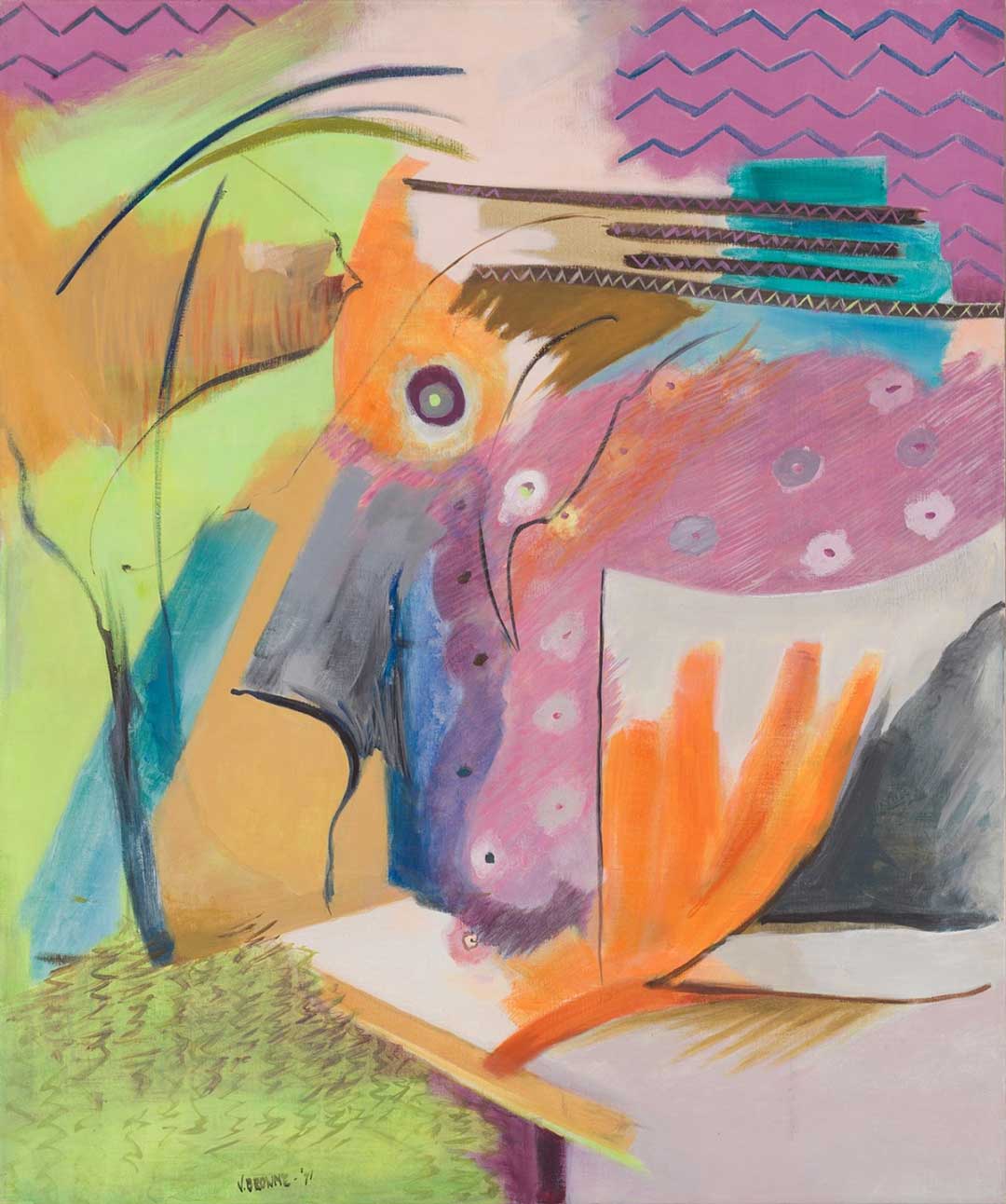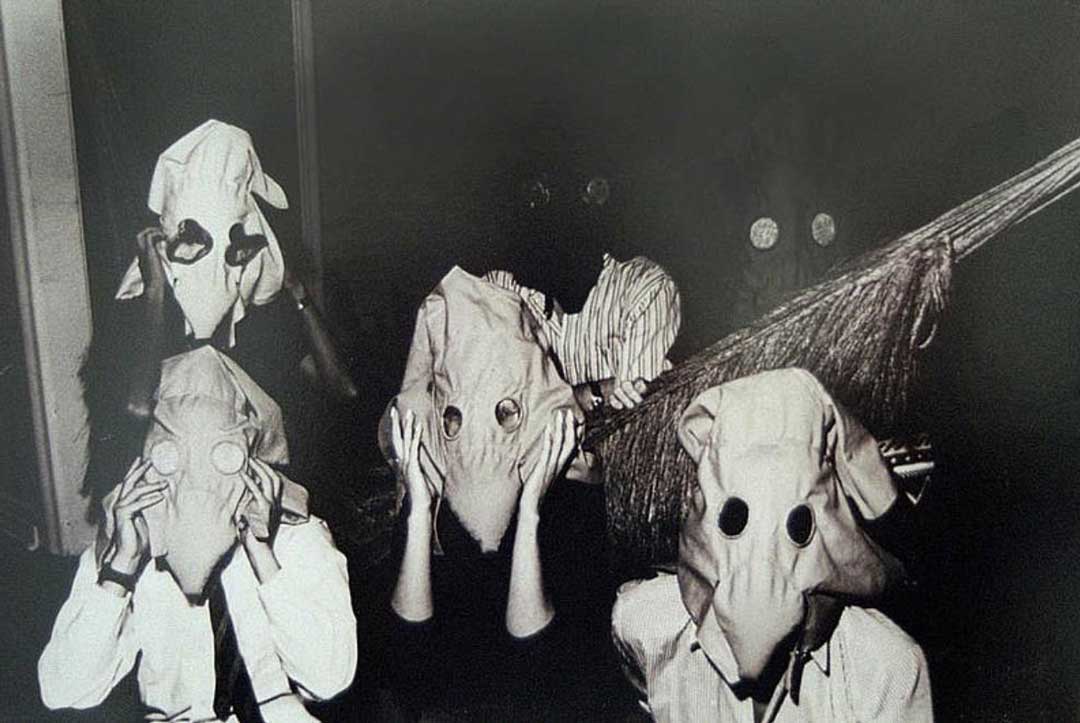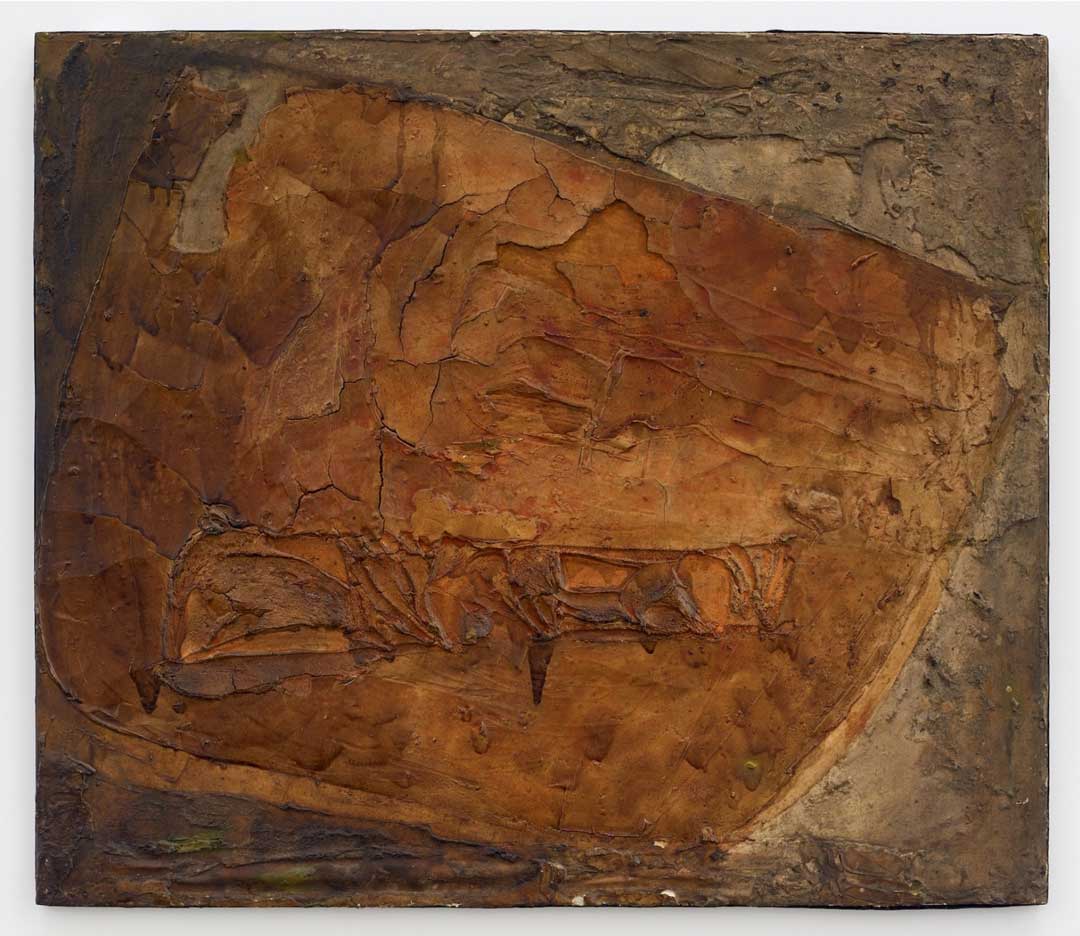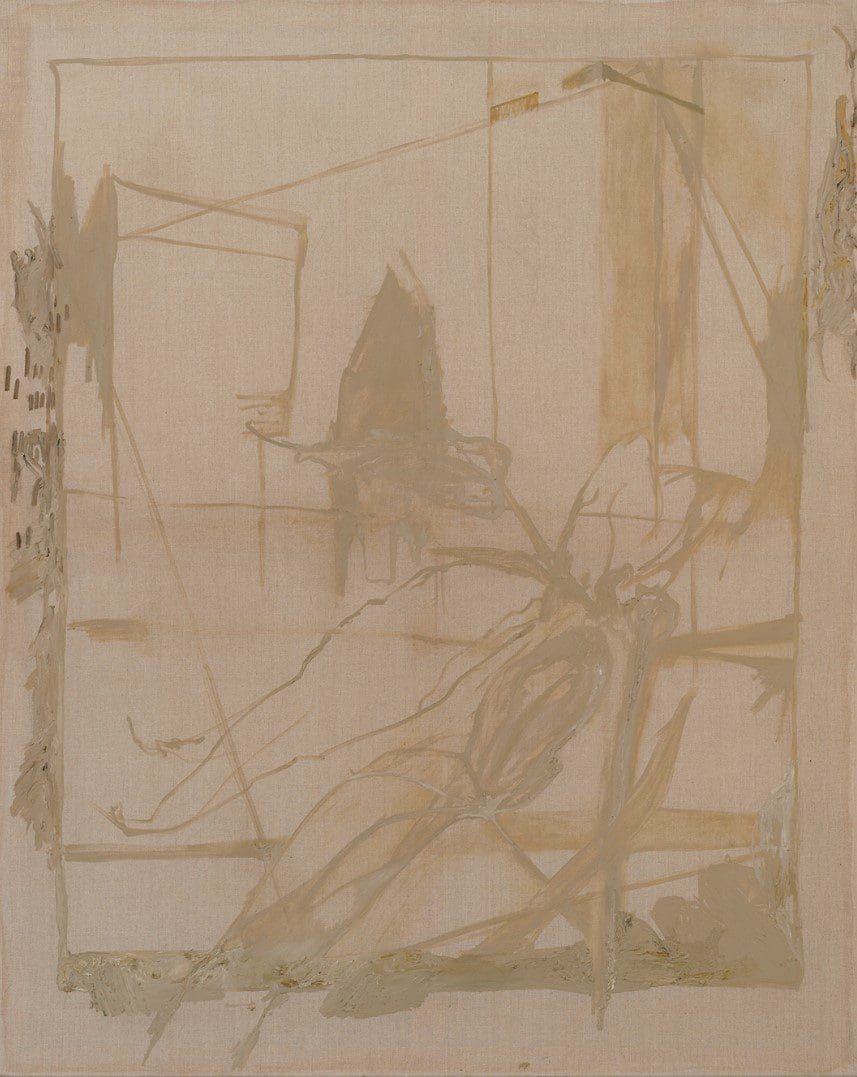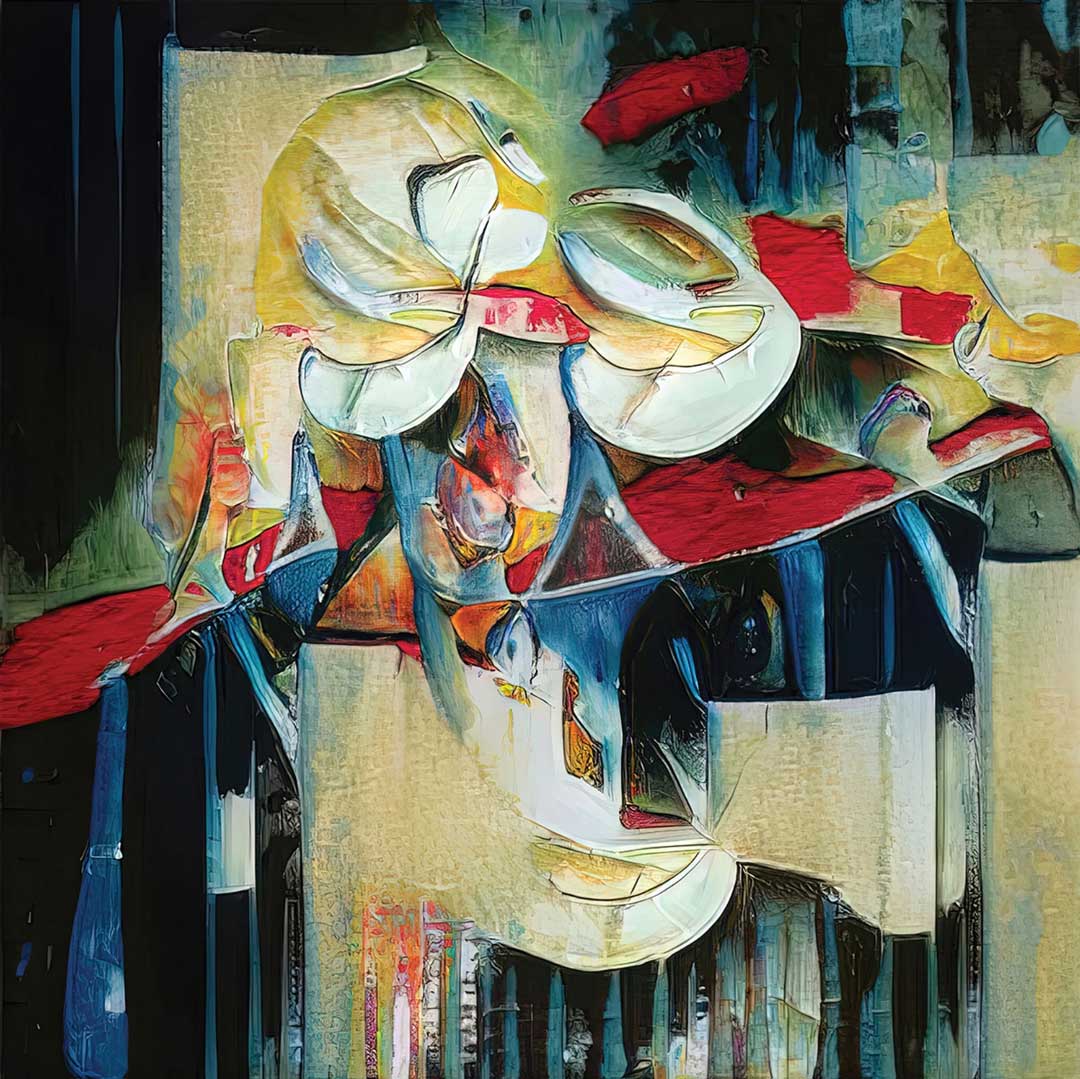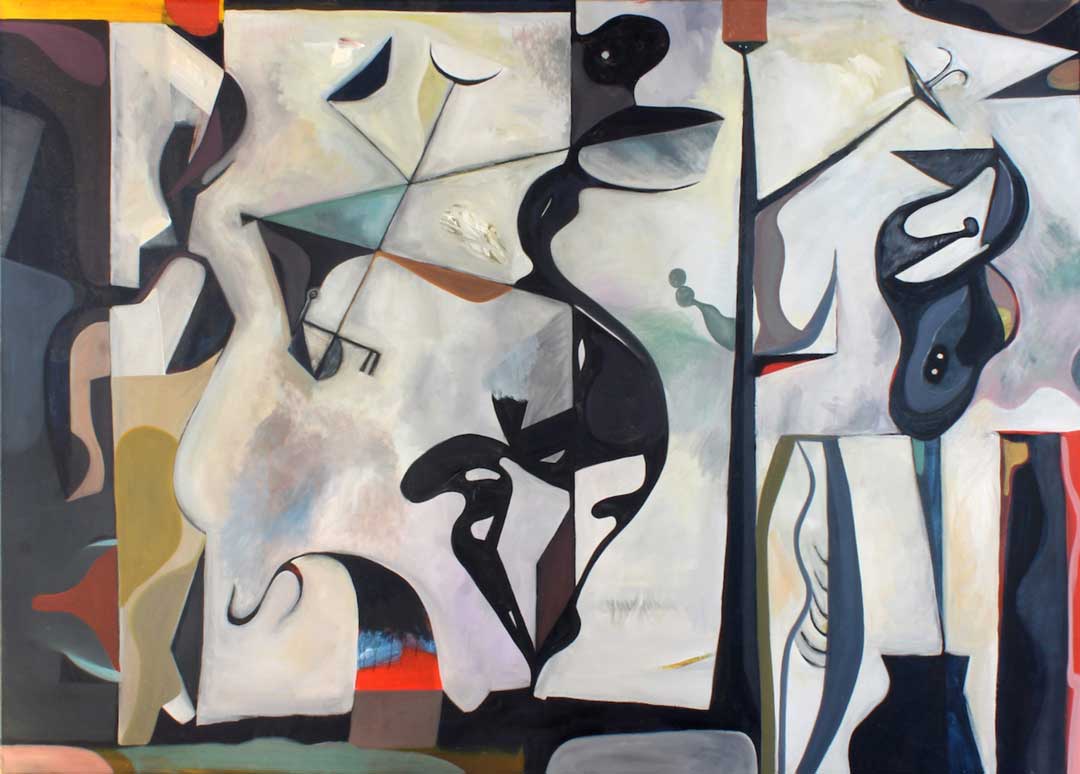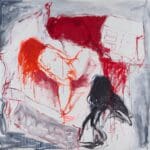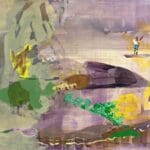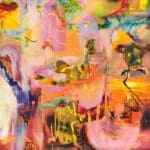Vivian Browne, “Umbrella Plant” (1971), oil on canvas, 48 3/4 x 40 3/4 inches (all images © Vivian Browne, courtesy RYAN LEE Gallery, New York, and Adobe Krow Archives, Los Angeles)
The eight paintings and five works on paper that comprise Vivian Browne: Africa Series 1971-1974, Browne’s second solo show at RYAN LEE Gallery, were prompted by the artist’s first trip to West Africa in 1971. At the time of her visit, the Florida-born, New York-based figurative painter and printmaker, then in her 40s, was at the tail end of her first major body of work: over 100 paintings and drawings of pathetic and grotesque Little Men, all of whom were White. As she labored over this scathingly clear-eyed series, Browne was hard at work outside the studio as well, pushing for a more equitable world.

